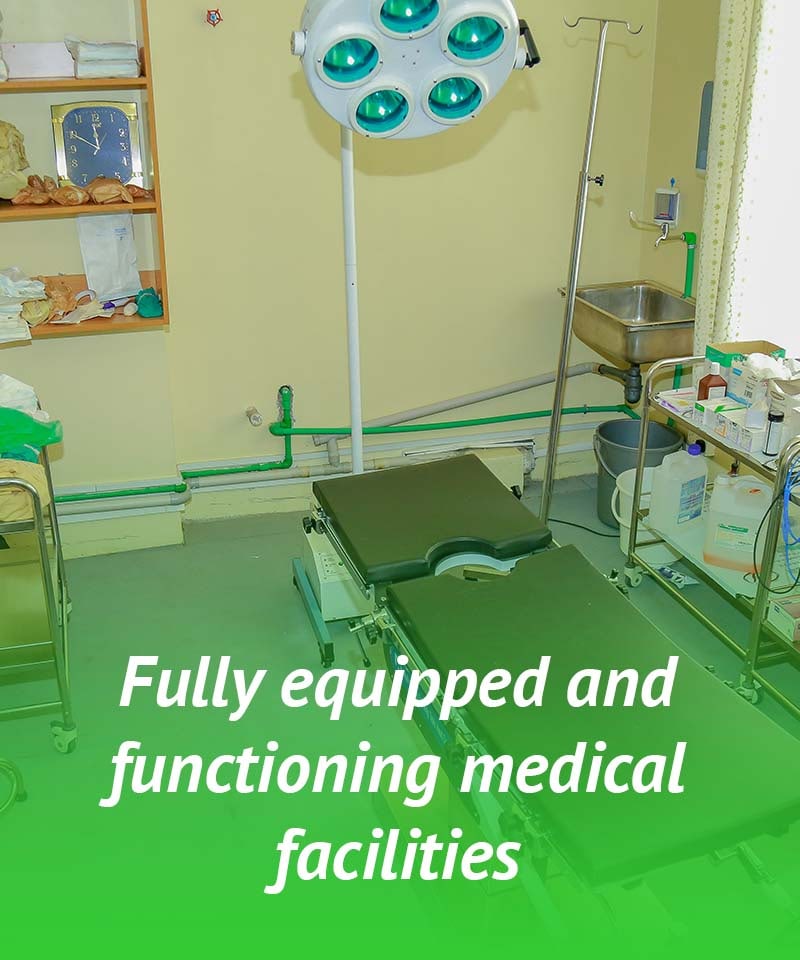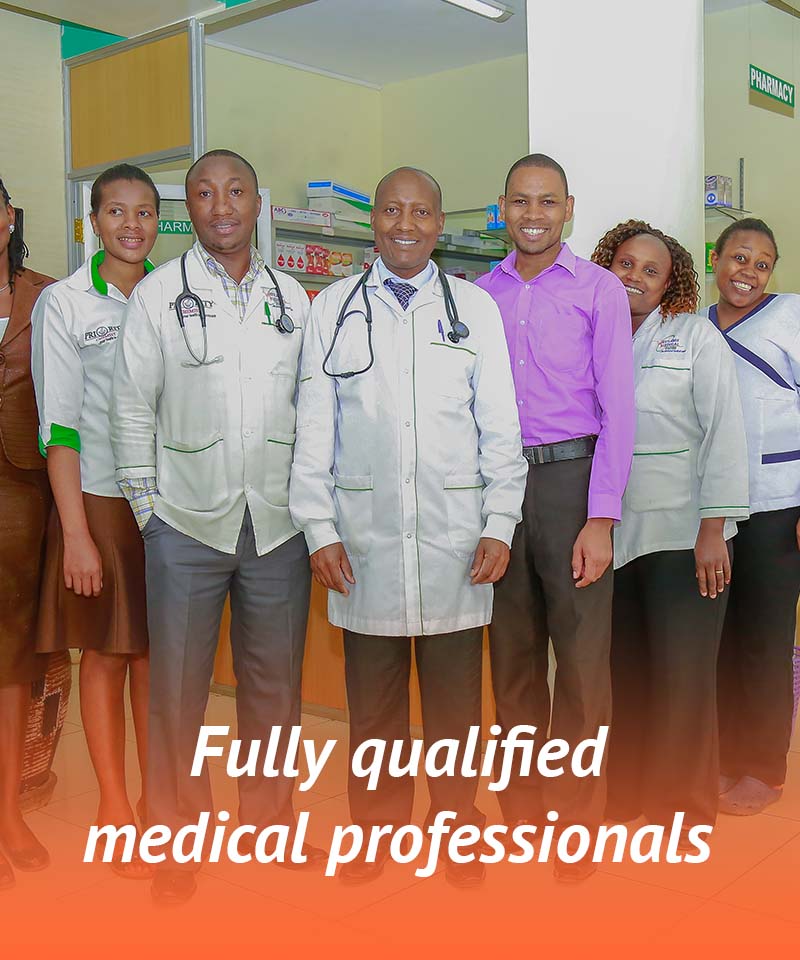 What do we know about the cause of breast cancer?
What do we know about the cause of breast cancer?
Breast cancer originates in breast tissue. It’s caused by changes, or mutations, in breast cell DNA. These mutations cause cells to grow abnormally and divide quicker than healthy cells do. The abnormal cells accumulate, forming a malignant breast mass, also known as a lump.
Your immune system may be able to successfully fight some abnormal cells. but the ones that continue to grow may spread, or metastasize, throughout the breast to the lymph nodes or other parts of the body.
When breast cancer spreads, the malignant tumors it causes in other places are still referred to as breast cancer.
What exactly triggers DNA changes in breast cells isn’t clear. Two people can have the same or similar risk factors, but only one might develop breast cancer.
What is Breast Cancer?
Breast cancer is caused by mutations, or damage, to the DNA in breast cells. Exactly what triggers this change is unknown, but many people will spend countless hours trying to figure it out.
What is known is that there are risk factors that may increase your chances of getting breast cancer. Some of them, like age, family history, and dense breasts, can’t be changed. Others are determined by lifestyle factors that can often be controlled.
It’s estimated that around 30% of new cancer diagnoses in women will be breast cancer. This makes early detection — and possible prevention — very important. In this article, we’ll go over the potential causes of breast cancer and what you can do about them.
What are the risk factors for breast cancer?
Age is the most significant risk factor for breast cancer. Most breast cancer cases are diagnosed in people over 55 years old.
But your genetics and external factors, like smoking, also have an impact. Genetic risk factors can’t be changed, but lifestyle choices that put you at higher risk can be altered.
It’s also likely that for many people, multiple risk factors — both genetic and environmental — have an impact when several are present.
Genetic risk factors
Gender
People born with a vagina are at a significantly higher risk for getting breast cancer than those born without one. According to the MoH, only about 1 in every 100 cases of breast cancer diagnosed is a man.
Heredity
You can inherit a gene mutation that puts you at higher risk for breast cancer from either biological parent. About 5 to 10 percent of all breast cancer cases are caused by hereditary gene mutations. The most common type is a mutation in the BRCA1 or BRCA2 gene.
If you have a BRCA1 or BRCA2 gene mutation, your risk for ovarian cancer is also increased.
There are other inherited gene mutations that can increase your risk as well, including:
- PALB2
- PTEN
- TP53
- ATM
- CDH1
Family history
If you have several close relatives with breast cancer, you may be more likely to develop it. This is especially true if you have one or more first-degree relatives with breast cancer. A first-degree relative is anyone you share at least 50 percent of your genetics with, like a parent or child.
Having a family history of breast cancer may mean you share the same genetic mutation. But there are other potential explanations here that have nothing to do with genetics.
For example, it may mean you share lifestyle choices that put you at greater risk. It may also be caused by environmental factors, like living in an area where chemical exposure, air pollution, or water pollution levels are high.
Menstruation and menopause
You may be more likely to develop ER-positive breast cancer if you began menstruating at a younger age or started menopause later than usual. This is because there’s a longer period of time when breast cells are affected by estrogen and possibly, progesterone.
Never having given birth also increases your lifetime exposure to estrogen.
If you have given birth, every 12 months that you nurse your child reduces your chance of getting breast cancer by about 4.3 percent.
External risk factors
Smoking
Smoking cigarettes and using nicotine products modestly increases the risk for breast cancer. The younger you were when you started smoking, the greater your risk. Smoking also increases your risk to a greater degree if you have a family history of the disease.
Alcohol consumption
It has been determined that alcohol is a carcinogen that’s causally related to breast cancer risk.
The greater your alcohol intake, the higher your risk may be. But even one drink per day increases risk in both premenopausal and postmenopausal women.
Environmental exposure to toxins
Toxins and chemicals can be found in:
- Soil
- Water
- Dust
- Air
- personal care products
- household products
- packaged foods
Some toxins are known as endocrine disruptors, or endocrine disrupting compounds. These toxins can mimic the effects of estrogen in the body and may increase breast cancer risk. Endocrine disruptors include:
- BPA (bisphenol A)
- DDT
- heavy metals, including arsenic, lead, and mercury
- phthalates
- atrazine
Diet
Certain foods may increase your risk of breast cancer. Foods to limit or avoid include:
- fried food
- sugary foods
- refined carbohydrates
- processed meats, including bacon, sausage, and cold cuts
Obesity
Because fat cells produce estrogen, being overweight or obese can be a significant risk factor — as is having a sedentary lifestyle, which may contribute to increased weight.
Women who’ve previously had breast cancer or are postmenopausal have an even higher risk if they’re overweight or are living with obesity.
Hormone-based medications
Hormonal birth control, including the pill, ring, and IUD, may increase your breast cancer risk slightly. This may be greater if you use hormonal birth control for 5 years or more. If you have a family history of breast cancer, your risk may be higher.
Hormone replacement therapy (HRT) poses a much greater risk. HRT isn’t recommended for symptom relief of menopause in people who have other risk factors for breast cancer.
Breast Cancer Treatment Options
A variety of treatments for breast cancer exist, and treatment is available at every stage of cancer. Most people need a combination of two or more treatments.
After diagnosis, the doctor will determine the stage of your cancer. They will then decide on the best treatment options based on your stage and other factors, such as age, family history, genetic mutation status, and personal medical history.
Treatments for early stage breast cancer may not be effective for advanced stage breast cancer.
Surgery for breast cancer
Most people with breast cancer will undergo surgery to remove cancer cells or tumors from the breast and other affected areas.
Lumpectomy and mastectomy are two surgical options. Deciding which option to use is based on:
- the size and location of the primary tumor
- personal preference
- other factors such as genetic predisposition
Biopsy of the lymph nodes will probably be performed at the same time.
Mastectomy
A mastectomy is the surgical removal of the entire breast. It’s recommended when cancer is found throughout the breast. Some people will get a double or bilateral mastectomy, where both breasts are removed. Surgery to reconstruct the breast can begin at the time of the mastectomy or at a later date.
Lumpectomy
In a lumpectomy, also called a breast-conserving surgery, the surgeon removes the cancerous cells and spares the rest of the breast. It’s an option when cancer is confined to one area of the breast.
A lumpectomy may be performed as an outpatient procedure. This means you can go home shortly after the surgery and won’t need to stay in a hospital overnight.
Reconstructive
In breast reconstruction surgery, a plastic surgeon uses an artificial implant or a flap of tissue from elsewhere on your body to create a breast shape.
Breast reconstructive surgery typically takes place during or soon after a mastectomy or lumpectomy, but can also be done months or years later.
There are two types of reconstruction surgeries: prosthetic reconstruction and tissue flap reconstruction.
In prosthetic reconstruction, a plastic surgeon creates the shape of a breast using an artificial implant filled with either saline or silicone.
In tissue flap surgery, a plastic surgeon uses tissue from various parts of your body, like your stomach, back, thighs, or buttocks, to rebuild the shape of your breasts.
Radiation therapy
Radiation is a type of targeted therapy where high-energy X-rays are used to kill cancer cells and prevent them from spreading. It’s usually recommended in the early stages of breast cancer, after lumpectomy for stage 0 breast cancers, and can be used alongside other treatments.
This treatment can lower the risk of cancer recurrence. Radiation therapy is typically administered 5 days per week over the course of 5 to 7 weeks.
Chemotherapy
Chemotherapy is a cancer treatment that uses powerful drugs to kill cancer cells throughout your body. It’s typically given intravenously or orally through pills but is occasionally administered directly into the spinal fluid surrounding the spinal cord.
Not everyone who gets breast cancer will need chemotherapy. It’s typically recommended before surgery to shrink a tumor so it can be removed more easily, or after surgery to kill any remaining cancer cells.
Chemotherapy is also used as a central treatment in people with advanced, metastatic breast cancer that has spread throughout the body.
There are a variety of chemotherapy drugs used to treat breast cancer, including:
- docetaxel (Taxotere)
- doxorubicin (Adriamycin)
- cyclophosphamide (Cytoxan)
You may receive a combination of several chemotherapy drugs.
Chemotherapy drugs are typically administered at a doctor’s office, hospital, or infusion center using an IV or injection. It’s standard for chemotherapy treatments to be given in cycles of 2 to 3 weeks followed by a rest period to give your body time to recover.
The length of chemotherapy treatment depends on how well the treatment is working and how well your body tolerates it.
Hormone therapy for breast cancer
About 2 of every 3 breast cancer cases are hormone-receptor positive. This means the breast cancer cells grow by attaching to hormones like estrogen and progesterone. Hormone therapy, also called endocrine therapy, stops these hormones from attaching to cancer cells, thus stopping their spread.
There are different types of hormone therapy but most work by altering levels of estrogen and preventing estrogen from connecting to cancer cells.
Hormone therapy is most often used after surgery to reduce the risk of cancer returning but is sometimes used before surgery. It’s a long-term treatment taken for at least 5 to 10 years.
Targeted therapy for breast cancer
Targeted therapy refers to a variety of drugs that enter the bloodstream and treat cancer throughout the body. Targeted therapy drugs aim to attack cancer cells without harming healthy cells, and tend to have fewer side effects than chemotherapy drugs.
Targeted therapies are often used to treat HER2-positive breast cancers. These are cancers that have an excess of a protein called HER2 that promotes the growth of cancer cells.
Common targeted therapy drugs for HER2-positive breast cancers include:
- Monoclonal antibodies like trastuzumab (Herceptin) are synthetic antibodies designed to attach to HER2 proteins and stop cells from growing.
- Antibody-drug conjugates like ado-trastuzumab emtansine (Kadcyla or TDM-1) attach to HER2 proteins on cancer cells and help chemotherapy reach them.
- Kinase inhibitors like Lapatinib (Tykerb) block HER2 proteins.
Targeted therapies are also used to treat hormone receptor-positive breast cancer along with hormone therapy.
Common targeted therapy drugs for people with hormone receptor-positive cancers include:
- CDK4/6 inhibitors, which block CDK proteins in cancer cells to stop them from dividing and slow cancer growth.
- mTOR inhibitors, which block mTOR proteins in cancer cells to stop them from dividing and growing. This treatment is believed to help hormone therapy drugs work more efficiently.
- PI3K inhibitors, which block the PI3K proteins in cancer cells and helps prevent them from growing.
Triple-negative breast cancer (TNBC) is a type of breast cancer that is neither HER2-positive nor hormone-receptor positive. Because of this, it doesn’t respond well to hormone therapy and other drugs must be used.
Common targeted therapy drugs for people with TNBC include:
- Antibody-drug conjugates, which attach to proteins in the breast cancer cells and help chemotherapy reach them.
Breast cancer treatment by stage
Stage 0 (DCIS)
If precancerous or cancer cells are confined to the milk ducts, it’s called noninvasive breast cancer or ductal carcinoma in situ (DCIS).
Stage 0 breast cancer can become invasive and spread beyond the ducts. Early treatment can stop you from developing invasive breast cancer. Early treatment can include surgeries like lumpectomy and mastectomy followed by radiation.
Stage 1
Stage 1A breast cancer means the primary tumor is 2 centimeters or less and the axillary lymph nodes aren’t affected. In stage 1B, cancer is found in lymph nodes and there’s no tumor in the breast or the tumor is smaller than 2 centimeters.
Both 1A and 1B are considered early stage invasive breast cancers. Surgery and one or more other therapies, like radiation or hormone therapy, may be recommended.
Stage 2
In stage 2A, the tumor is smaller than 2 centimeters and has spread to between one and three nearby lymph nodes. Or, it’s between 2 and 5 centimeters and hasn’t spread to lymph nodes.
Stage 2B means the tumor is between 2 and 5 centimeters and has spread to between one and three nearby lymph nodes. Or it’s larger than 5 centimeters and hasn’t spread to any lymph nodes.
You’ll probably need a combination of surgery, chemotherapy, and one or more of the following: targeted therapy, radiation, and hormone treatment.
Stage 3
Treatment for stage 3 typically involves a combination of treatments including:
Systemic therapies. Systemic therapies include chemotherapy, targeted therapy for HER2-positive cancers, and hormone therapy for hormone receptor-positive cancers.
Surgery. If cancer improves with chemo, the next step is surgery. Because IBC is so aggressive and affects a large area of the breasts and skin, breast-conserving surgeries like lumpectomies and partial mastectomies are not an option. Instead, surgery typically involves the removal of the entire breast through a modified radical mastectomy. If cancer doesn’t respond to chemotherapy, surgery cannot be done and other chemotherapy drugs or radiation therapy will be used.
Radiation therapy. Radiation treatment given after surgery, called adjuvant radiation, can lower the chances that cancer will come back.
Stage 4
People with stage 4 are primarily treated with systemic therapy, although surgery and radiation may be options in certain situations. Systemic therapy may include:
- Chemotherapy
- hormonal therapy (for hormone receptor-positive cancers)
- targeted therapy (for HER2-positive cancers)
- Inflammatory breast cancer treatment
Inflammatory breast cancer (IBC) is an uncommon and aggressive type of breast cancer caused by cancer cells blocking lymph vessels in the skin.
All IBC cases are classified as at least stage 3 breast cancer. If the cancer is metastatic (has spread to other parts of the body), it’s considered stage 4.
Treatments for IBC depend on what stage the cancer is in.
Immunotherapy as an emerging treatment
Immunotherapy is a relatively new treatment option, and while it hasn’t been approved by the Ministry of Health (FMoH) for breast cancer yet, it’s a promising area.
Immunotherapy works by raising the body’s natural defenses to fight off the cancer. It has fewer side effects than chemotherapy and is less likely to cause resistance.
Pembrolizumab is an immune checkpoint inhibitor. It’s a type of immunotherapy that has shown particular promise in the treatment of metastatic breast cancer.
It works by blocking specific antibodies that make it harder for the immune system to fight the cancer. This allows the body to fight back more efficiently. A 2016 study found 37.5 percent of patients with triple-negative breast cancer saw a benefit from the therapy.
Because immunotherapy isn’t MoH approved yet, treatment is mostly available through clinical trials at this time.
Complementary and alternative treatments
Some people with breast cancer might be interested in exploring complementary or alternative treatments like vitamins, herbs, acupuncture, and massage.
These treatments are used alongside traditional breast cancer therapies to treat cancer or relieve cancer symptoms and uncomfortable side effects of treatments like chemotherapy. You can explore these treatments at any stage of breast cancer.
Examples of alternative therapy include:
- using massage to relax
- using peppermint tea to reduce nausea
- using cannabis to relieve pain
While some alternative medicine treatments might help you feel more comfortable, it’s important to keep in mind that many are unproven and could be harmful to your health. To be safe, talk with your doctor about alternative treatments you’re interested in pursuing.
Pain management
Breast cancer that spreads to other parts of the body can cause pain, such as bone pain, muscle pain, headaches, and discomfort around the liver. Talk with your doctor about pain management.
Options for mild to moderate pain include acetaminophen and nonsteroidal anti-inflammatory drugs (NSAIDs), such as ibuprofen.
For severe pain in a later stage, your doctor may recommend an opioid such as morphine, oxycodone, hydromorphone, or fentanyl. These opioids have the potential for addiction, so they are only recommended in certain cases.
In recent years, a growing number of people with cancer are using cannabis to manage cancer symptoms and pain. A large observational study of cancer patients using cannabis over 6 months showed a decreased number of patients with severe pain, as well as decreased opioid use.
Factors impacting breast cancer treatment
While breast cancer stage has a lot to do with treatment options, other factors can impact your treatment options as well.
Age
The prognosis for breast cancer is usually worse in people younger than 40 because breast cancer tends to be more aggressive in younger people.
Balancing body image with perceived risk reduction may play a role in the decision between lumpectomy and mastectomy.
In addition to surgery, chemotherapy, and radiation, several years of hormonal therapy for hormone-positive breast cancers is often recommended for young people. This can help prevent a recurrence or spread of breast cancer.
For premenopausal people, ovarian suppression may be recommended in addition to hormone therapy.
Pregnancy
Being pregnant also impacts breast cancer treatment. Breast cancer surgery is usually safe for people who are pregnant, but doctors may discourage chemotherapy until the second or third trimester.
Hormone therapy and radiation therapy can harm an unborn baby and aren’t recommended during pregnancy.
Tumor growth
Treatment also depends on how fast the cancer grows and spreads.
If you have an aggressive form of breast cancer, your doctor may recommend a more aggressive approach, such as surgery and a combination of other therapies.
Genetics and family history
Treatment for breast cancer may depend partly on having a close relative with a history of breast cancer or testing positive for a gene that increases the risk of developing breast cancer.
Patients with these factors may choose a preventive surgical option, such as a bilateral mastectomy.




